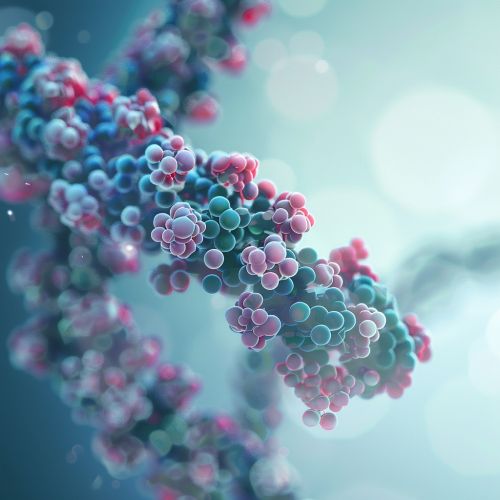Transcription termination
Overview
Transcription termination is a vital process in gene expression, marking the end of the transcription phase. This process involves the cessation of RNA synthesis at the termination site of a gene. The mechanisms of transcription termination are complex and vary between prokaryotes and eukaryotes, with different types of RNA polymerases exhibiting distinct termination processes.
Mechanisms of Transcription Termination
Transcription termination mechanisms can be broadly classified into two categories: Rho-dependent termination and Rho-independent termination.
Rho-dependent Termination
Rho factor is a helicase protein that facilitates the termination of transcription in prokaryotes. It binds to the RNA at the rut (Rho utilization) site and moves along the RNA towards the RNA-DNA helix. Upon reaching the helix, Rho factor unwinds the RNA-DNA hybrid, leading to the release of the newly synthesized RNA and RNA polymerase.


Rho-independent Termination
Rho-independent termination, also known as intrinsic termination, does not require the Rho factor. Instead, it relies on the formation of a GC-rich hairpin loop in the RNA molecule, followed by a run of uracil bases. The hairpin structure causes the RNA-DNA hybrid to become unstable, leading to the dissociation of the RNA and RNA polymerase from the DNA template.
Transcription Termination in Eukaryotes
In eukaryotes, transcription termination is more complex and less well understood than in prokaryotes. The process involves multiple proteins and occurs differently for different types of RNA polymerases.
RNA Polymerase II
Transcription termination by RNA polymerase II involves a process known as polyadenylation. The RNA polymerase continues to transcribe beyond the gene's coding region until it encounters a sequence of adenine bases. This sequence signals the addition of a poly(A) tail to the RNA, which is crucial for the stability and export of the RNA from the nucleus. Following polyadenylation, the RNA is released from the DNA template.
RNA Polymerase I and III
Transcription termination by RNA polymerase I and RNA polymerase III involves specific termination factors. For RNA polymerase I, the termination factor TTF-I binds to a termination sequence in the DNA, causing the RNA polymerase to pause and eventually dissociate from the DNA. For RNA polymerase III, a stretch of T bases in the DNA signals termination.
Implications of Transcription Termination
Transcription termination is crucial for the regulation of gene expression. Defects in termination can lead to read-through transcription, where the RNA polymerase continues to transcribe beyond the termination site. This can result in the production of aberrant RNAs and can disrupt the expression of downstream genes. Therefore, understanding the mechanisms of transcription termination can provide insights into the regulation of gene expression and the causes of certain genetic diseases.
